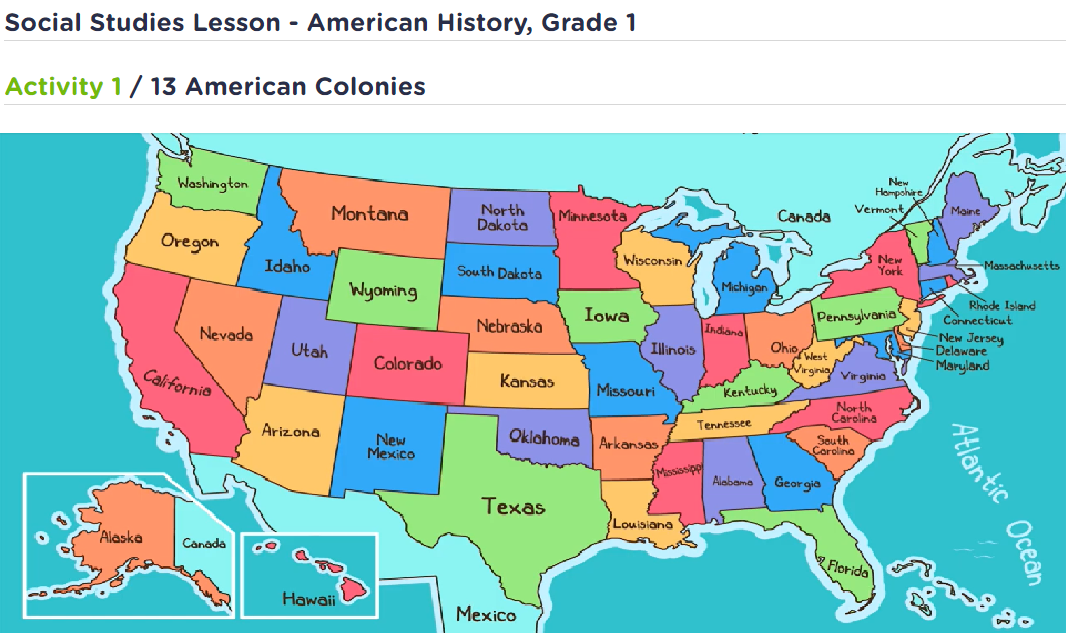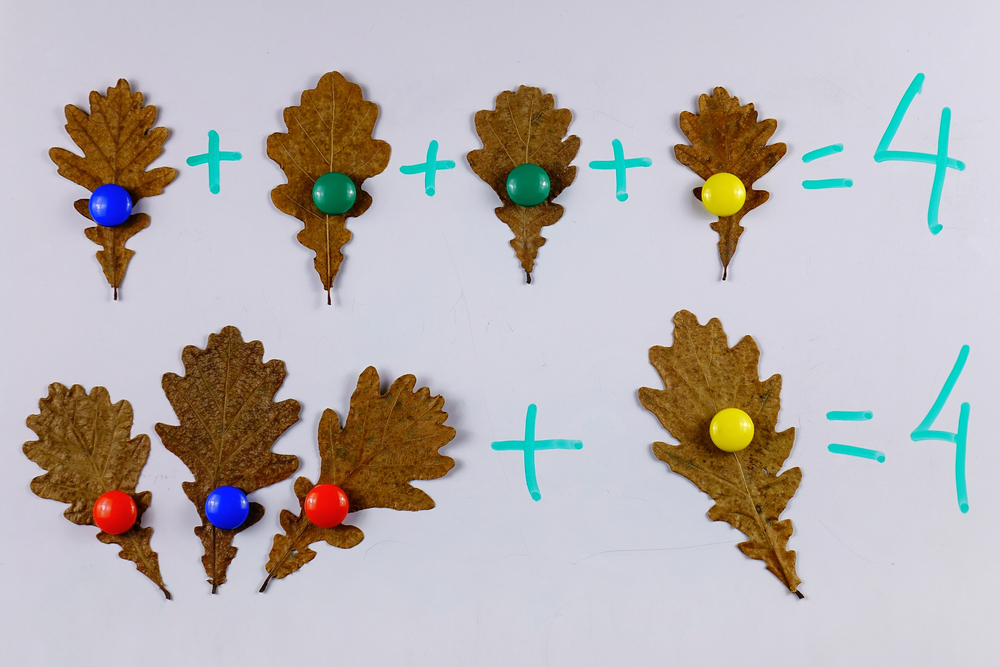Animal Classification Science Worksheets for Ages 5-7
5 filtered results
-
From - To
Introduce young learners to the captivating world of animal classification with our science worksheets designed for ages 5-7. These engaging activities feature colorful images and easy-to-understand information to help children grasp the basics of categorizing animals into groups such as mammals, birds, reptiles, and more. Each printable worksheet encourages critical thinking and observation skills, making learning both fun and informative. Ideal for both classroom and home use, our resources are aligned with educational standards to support your child's growth in science. Help your child explore and classify the animal kingdom today!
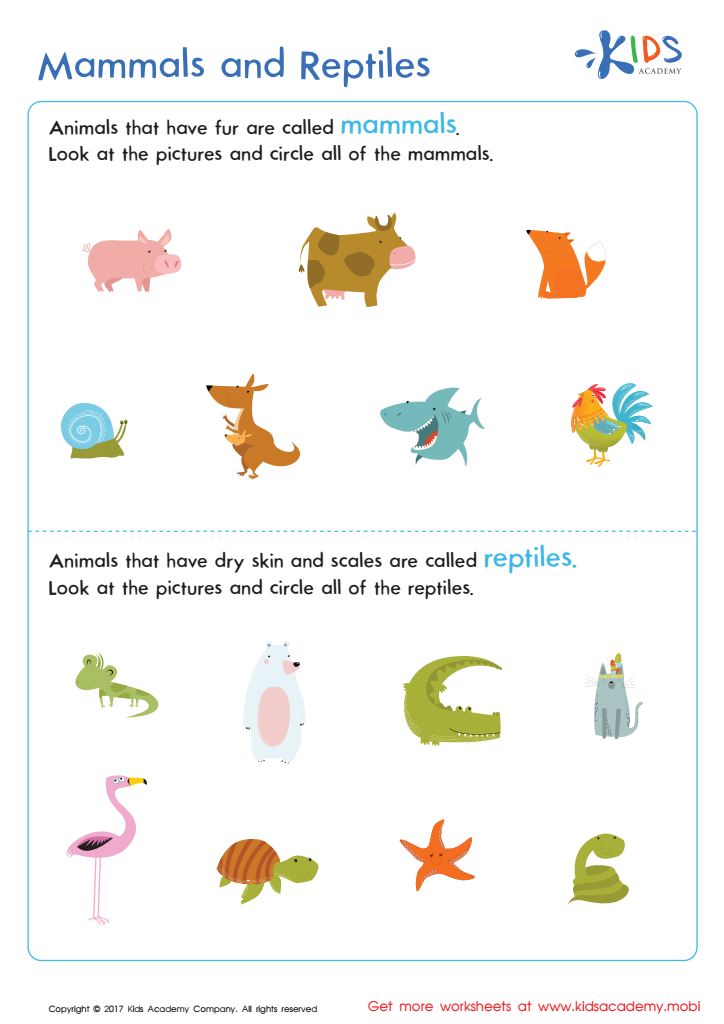

Mammals and Reptiles Worksheet
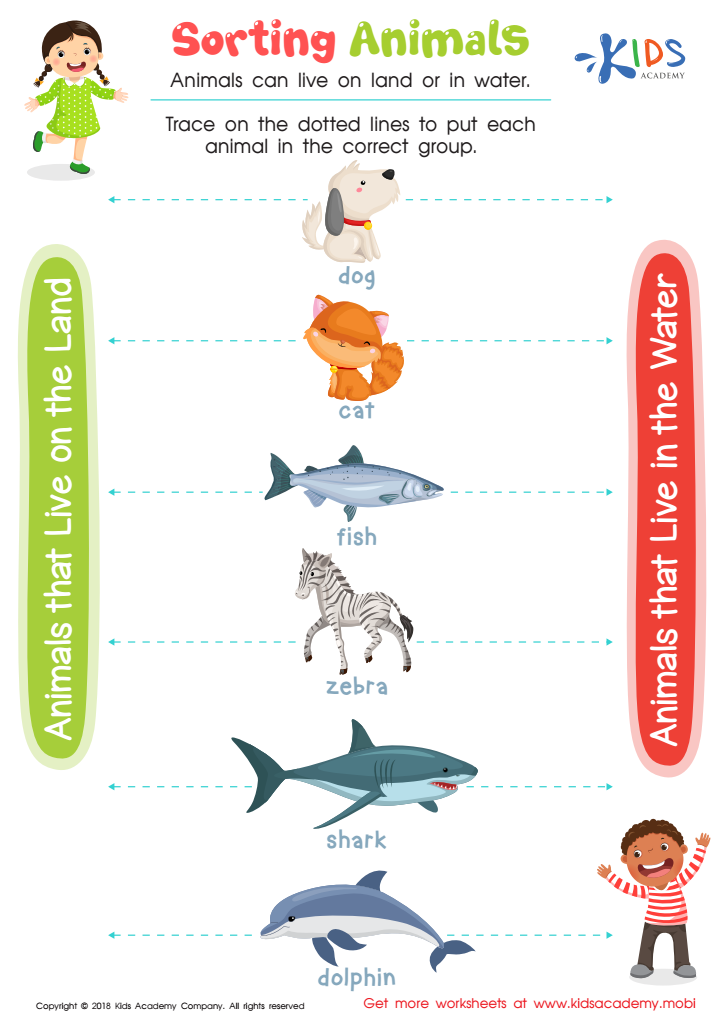

Sorting Animals Worksheet
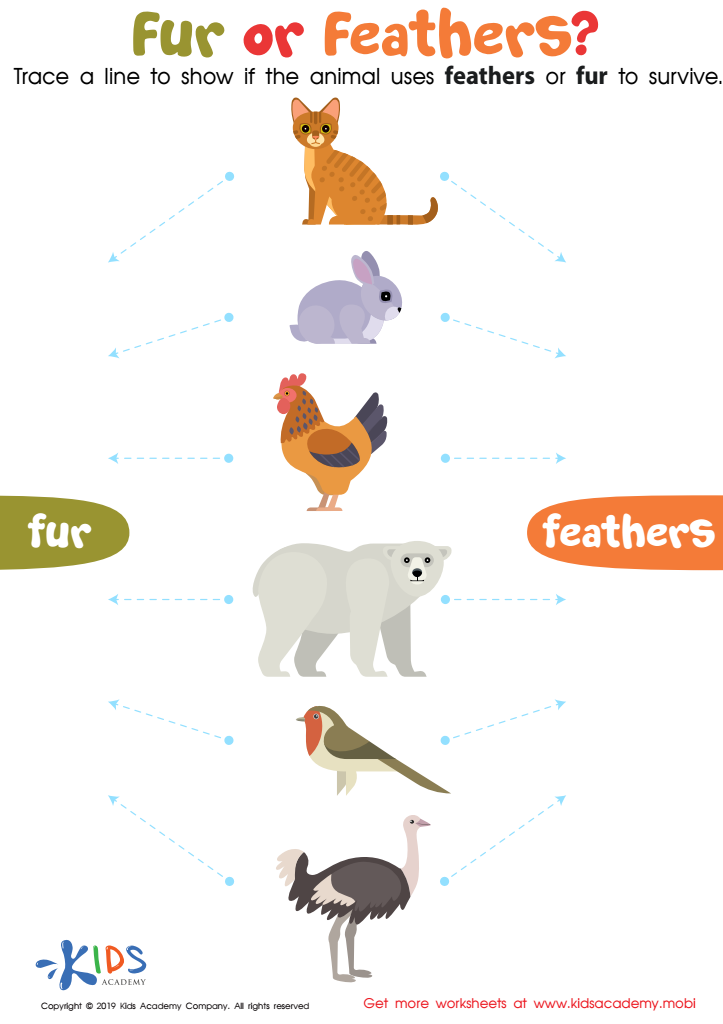

Fur or Feathers? Worksheet
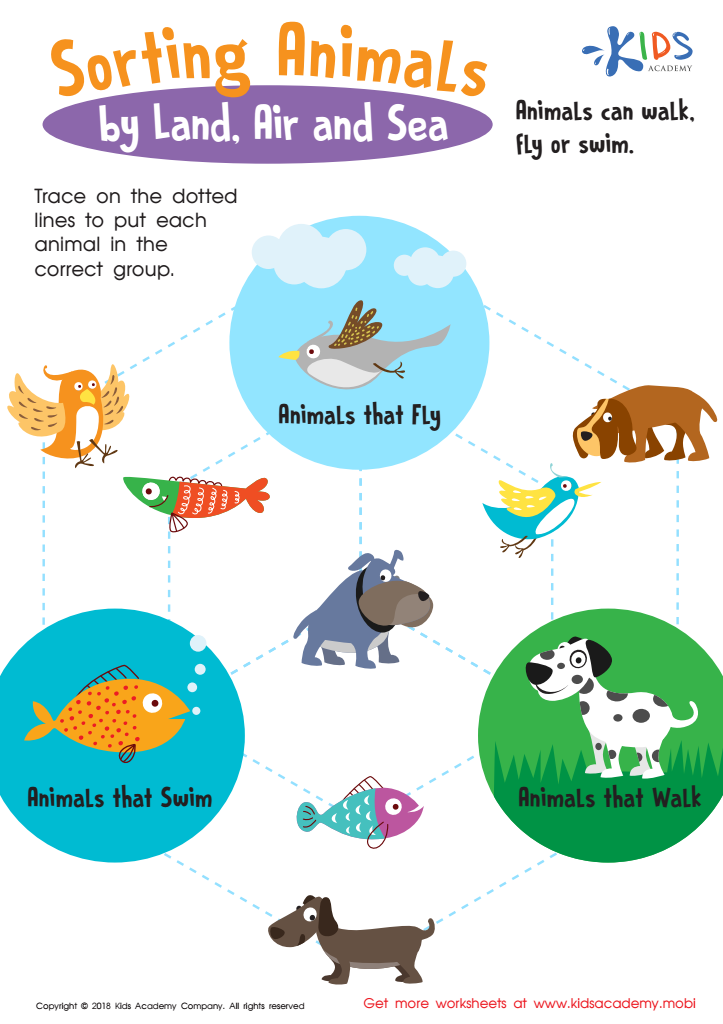

Sorting Animals by Land, Air and Sea Worksheet
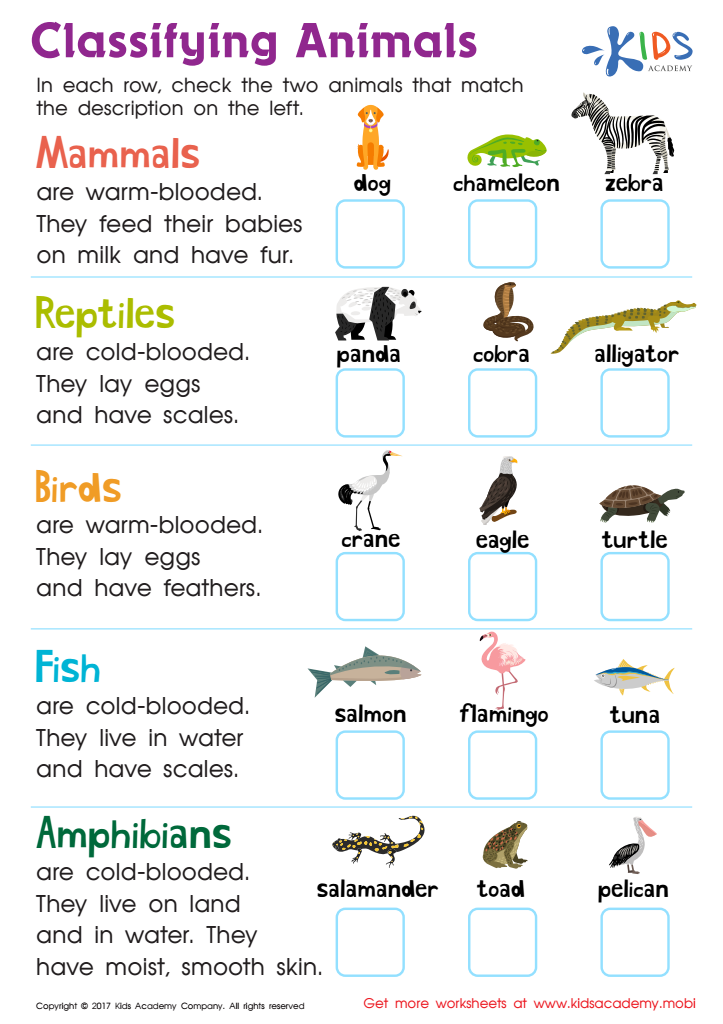

Classifying Animals Worksheet
Understanding animal classification in early childhood is essential for fostering a child's cognitive and emotional development. For ages 5-7, learning about the differences and similarities between animals engages children's natural curiosity and nurtures their observational skills. By categorizing animals, young learners start grasping foundational scientific concepts like habitats, adaptability, and ecosystems. These lessons extend beyond science and contribute to literacy and numeracy; for example, sorting animals anatomically or by habitat involves key skills akin to grouping letters or objects in math.
Animal classification also reinforces critical thinking and problem-solving abilities. As children ask questions and draw comparisons between different species, they practice forming hypotheses and testing their theories, laying an early foundation for the scientific method. Socially and emotionally, discussions around animals often generate enthusiasm and empathy, encouraging children to cultivate a sense of responsibility toward the natural world. As stewards of tomorrow's environment, understanding biodiversity now fosters a lifelong respect and curiosity for nature's intricacies.
Moreover, fun and interactive classification activities make learning enjoyable and memorable, instilling in children a positive, curious attitude toward learning. In summary, prioritizing animal classification in early education enriches cognitive skills, ignites curiosity, and builds a framework for responsible environmental stewardship.

 Assign to My Students
Assign to My Students





